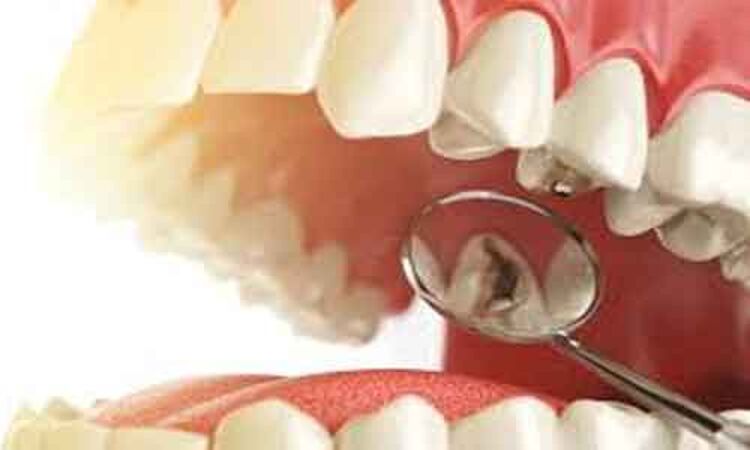- Home
- Medical news & Guidelines
- Anesthesiology
- Cardiology and CTVS
- Critical Care
- Dentistry
- Dermatology
- Diabetes and Endocrinology
- ENT
- Gastroenterology
- Medicine
- Nephrology
- Neurology
- Obstretics-Gynaecology
- Oncology
- Ophthalmology
- Orthopaedics
- Pediatrics-Neonatology
- Psychiatry
- Pulmonology
- Radiology
- Surgery
- Urology
- Laboratory Medicine
- Diet
- Nursing
- Paramedical
- Physiotherapy
- Health news
- Fact Check
- Bone Health Fact Check
- Brain Health Fact Check
- Cancer Related Fact Check
- Child Care Fact Check
- Dental and oral health fact check
- Diabetes and metabolic health fact check
- Diet and Nutrition Fact Check
- Eye and ENT Care Fact Check
- Fitness fact check
- Gut health fact check
- Heart health fact check
- Kidney health fact check
- Medical education fact check
- Men's health fact check
- Respiratory fact check
- Skin and hair care fact check
- Vaccine and Immunization fact check
- Women's health fact check
- AYUSH
- State News
- Andaman and Nicobar Islands
- Andhra Pradesh
- Arunachal Pradesh
- Assam
- Bihar
- Chandigarh
- Chattisgarh
- Dadra and Nagar Haveli
- Daman and Diu
- Delhi
- Goa
- Gujarat
- Haryana
- Himachal Pradesh
- Jammu & Kashmir
- Jharkhand
- Karnataka
- Kerala
- Ladakh
- Lakshadweep
- Madhya Pradesh
- Maharashtra
- Manipur
- Meghalaya
- Mizoram
- Nagaland
- Odisha
- Puducherry
- Punjab
- Rajasthan
- Sikkim
- Tamil Nadu
- Telangana
- Tripura
- Uttar Pradesh
- Uttrakhand
- West Bengal
- Medical Education
- Industry
Number of missing teeth strongest predictor of mortality: study

The number of missing teeth is the strongest predictor of mortality, according to a study published in the International Endodontic Journal.
A group of researchers conducted a study to determine whether oral parameters such as endodontic infections, root canal fillings, number of teeth or wearing removable dentures at baseline are associated with cardiovascular- and all-cause mortality in a follow-up of approximately 8 years.
The Finnish Parogene cohort consists of 508 Finnish adults (mean age 63.3 years, SD 9.1) with cardiac symptoms, all of whom had undergone coronary angiography for accurate baseline coronary status. Extensive clinical and radiographic oral examinations were performed, and additional data were acquired from medical records and questionnaires. Root canal fillings and endodontic lesions, as well as their co-occurrence, were determined from panoramic radiographs. The mortality data were assessed via record linkage with the Finnish Causes of Death Register (mean follow-up time 7.81 years, SD 1.45 years). A total of n = 471 dentate patients were included in the statistical analyses.
The Results of the study are as follows:
A total of n = 69 deaths were recorded, of which n = 41 were due to cardiovascular diseases (CVDs, ICD-10 I00–I99). The deceased had fewer root canal fillings (mean 1.57; SD 1.64 vs. mean 2.30; SD 2.34, P = 0.03) than the survivors. The number of missing teeth was associated with smoking, occluded coronary arteries and diabetes. Cox regression with Firth's penalized maximum-likelihood method using age as timescale revealed an inverse association (HR; 95%CI) between mortality and number of teeth (all-cause 0.91; 0.86–0.96, CVD mortality 0.89; 0.83–0.96), use of removable dentures (all-cause 0.24; 0.09–0.62, CVD mortality 0.20; 0.06–0.72), root canal fillings (all-cause 0.82; 0.70–0.94, CVD mortality 0.79; 0.63–0.96) and having root canal fillings in all teeth with apical rarefactions (all-cause 0.27; 0.06–0.79, CVD mortality 0.09; 0.01–0.63), when gender, smoking, occluded coronary arteries, periodontal inflammatory burden index and the number of teeth was adjusted for.
Thus, the researchers concluded that the number of missing teeth appeared to be the strongest predictor of mortality in this study, whereas endodontic infections per se had no independent association. Nevertheless, signs of professional intervention in these problems, such as root canal fillings and removable dentures, appeared to be associated with improved survival, which might partly be explained by the utilization of healthcare services.
Reference:
Association between dental factors and mortality by J. M. Liljestrand et al. published in the International Endodontic Journal.
https://doi.org/10.1111/iej.13458
Dr. Shravani Dali has completed her BDS from Pravara institute of medical sciences, loni. Following which she extensively worked in the healthcare sector for 2+ years. She has been actively involved in writing blogs in field of health and wellness. Currently she is pursuing her Masters of public health-health administration from Tata institute of social sciences. She can be contacted at editorial@medicaldialogues.in.
Dr Kamal Kant Kohli-MBBS, DTCD- a chest specialist with more than 30 years of practice and a flair for writing clinical articles, Dr Kamal Kant Kohli joined Medical Dialogues as a Chief Editor of Medical News. Besides writing articles, as an editor, he proofreads and verifies all the medical content published on Medical Dialogues including those coming from journals, studies,medical conferences,guidelines etc. Email: drkohli@medicaldialogues.in. Contact no. 011-43720751


